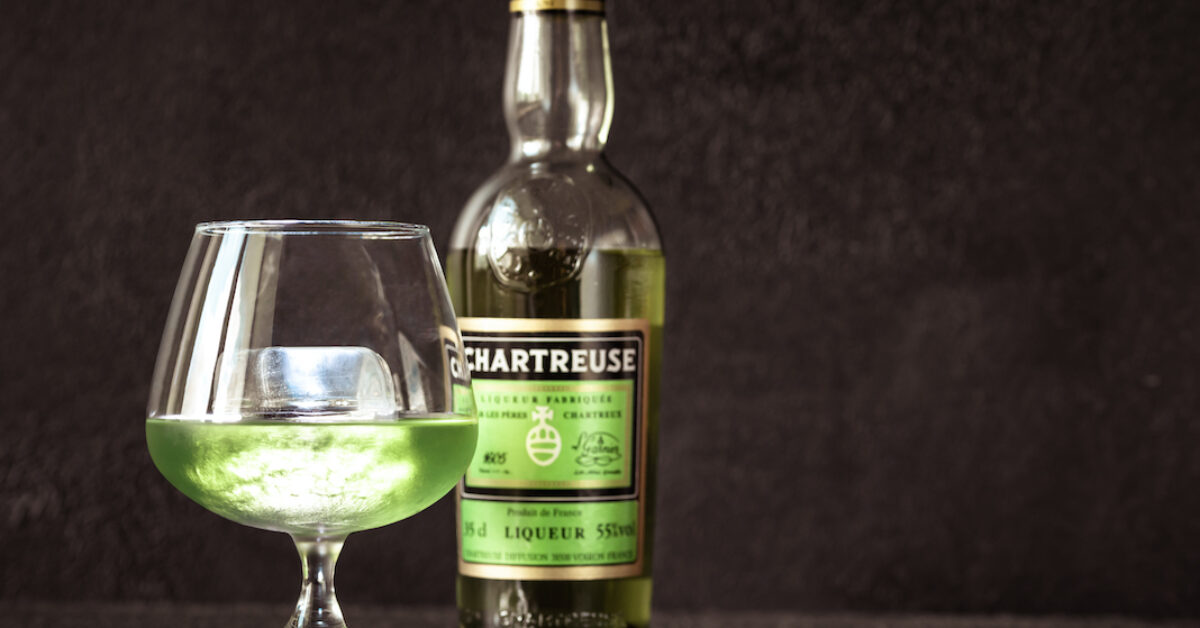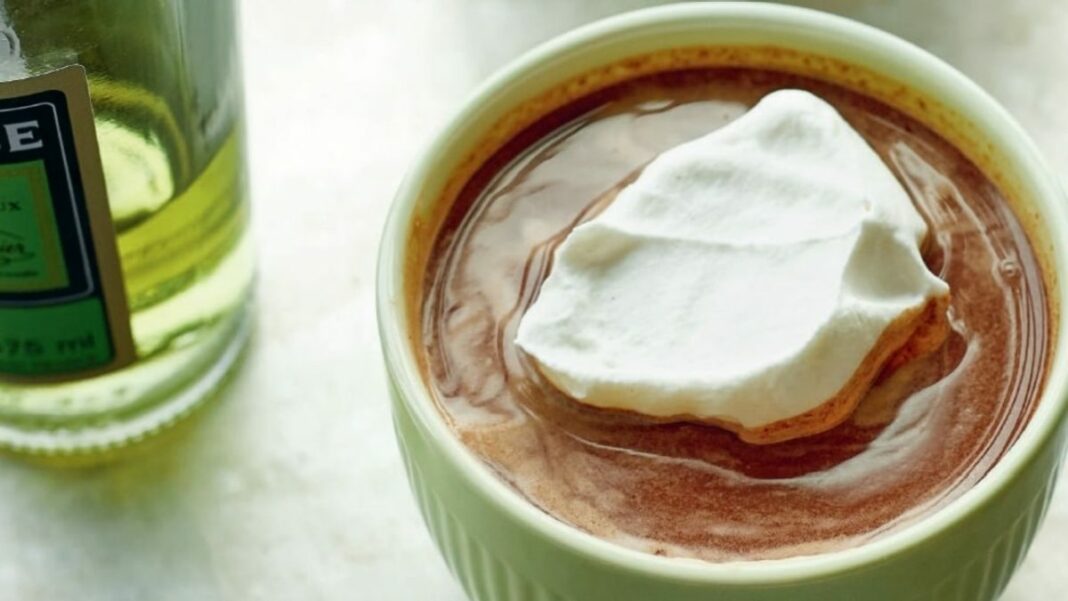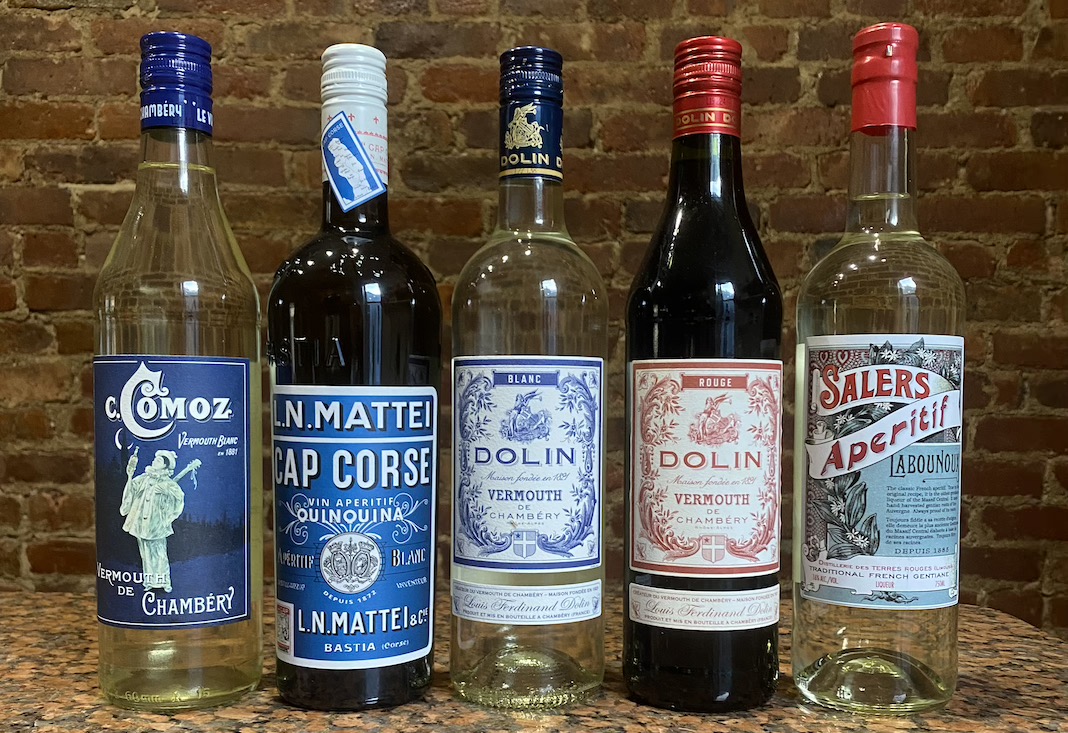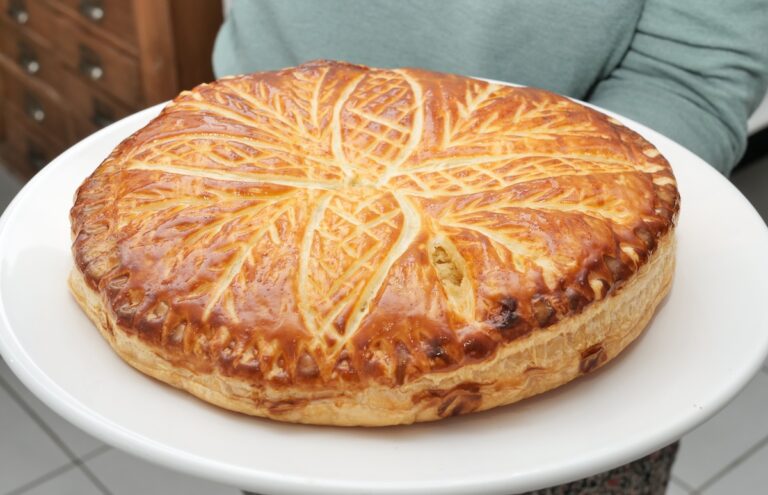January 13, 2023
Dear Frenchly Readers,
Last summer Dan and my boys bought a bottle of Green Chartreuse V.E.P. (which stands for Vieillissement Exceptionnellement Prolongé—or, Exceptionally Prolonged Aging) for my birthday. Somehow they got the wooden box into a hard suitcase, wrapped it in clothes and, two days later, back home in Maine, gave it to me as a gift. Apparently, it was hard to find. They had to go to several shops in Lyon to find it, as almost everyone was out because there is a shortage of Chartreuse.
Chartreuse, for those of you just getting up to speed, is a mysterious green liqueur made from a secret recipe of at least 130 macerated herbs by Carthusian monks in the French Alps. It is distilled in copper pots and then aged in charred oak barrels for what can be longer than 5 years. It has been considered for, oh just 400 plus years, to be an elixir of long life. I’m optimistically believing that this was my birthday present because my family hopes I will live a long life. I think, more simply, they saw me enjoy the drink as a digestif after a wonderful dinner at our friends, Nils and Charlotte’s, home in Lyon and thought, why not?
Part of the reason it’s in short supply is that it’s not exactly a fast thing to make Chartreuse. And, unsurprisingly, Carthusian monks have other things on their agenda, like prayer, frugal meals, walks in the forest and living in quiet harmony. The monks, in fact, have actually scaled back production as they feel that demand has become unsustainable. The motto of the Chartreux, as the Carthusian monks are known, is and has been for 900 years: “The cross is steady while the world turns.” Any number of wars (or pick your disaster) have happened on the planet while the Chartreux have quietly continued to believe in steadiness.
Another reason for the shortage, apart from production slowdowns that began during the pandemic, is that Chartreuse has really caught on in Japan. The whole long life thing, plus the Japanese dig the green color in cocktails. And, it’s gotten a boost in other places, too. During the lockdown, home mixers were game to try their hand at using the French liqueur in all kinds of recipes floating around on socials, and it took off.
What is exciting to me is the unchanged and intriguing history of this monkish order, formed in 1084, in France’s emerald “Chartreuse” mountains, and how they began brewing this iconic liqueur. In 1605, according to a December 2020 article in The New York Times, “the order’s monastery near Paris received an alchemist’s ancient manuscript for a perfectly concocted medicinal tonic of about 130 herbs and plants: the ‘Elixir of Long Life.’” By 1764, the monks had perfected a 138 proof elixir “végétal” which was delivered by one solitary monk riding a mule to neighboring towns. Today, you can buy the “Elixir Végétal,” a less aged version than the V.E.P. I own, but still a very potent version of Chartreuse, in pharmacies. The French say it cures or soothes anything from digestive ailments, nausea, or a sore throat.
Today, only 2 monks know the full 130 herb recipe to the liqueur. From the same Times article: “‘I really have no idea what it is I sell,’ a Chartreuse Diffusion president told The New Yorker in 1984. ‘I am very scared always. Only three [sic] of the brothers know how to make it — nobody else knows the recipe. And each morning they drive together to the distillery. And they drive a very old car. And they drive it very badly.’” When the two remaining men are gone, unless they bequeath the recipe, hundreds of years of Chartreuse perfecting will depart with them.
This reminds me of the Sabbathday Lake Shakers not far from where I live in Maine. Only two remain. And when they are gone, the world’s last community of Shakers is gone with them. (These beautiful photos of the last two Shakers by Maine photographer, Sean Alonzo Harris, are worth a gander.)
Here’s what I can tell you about the liqueur itself: it tastes of green grass and sunlight and evening swims in the Lac d’Annecy. To me this is a drink meant to be consumed at room temperature, not in a cocktail, and I like to drink only a little, after dinner. It doesn’t make you feel tired or drunk, just sort of cleansed, oddly, from a heavy holiday meal. It should be used in moderation, like good cheese, or special wine, or chocolate—a small tipple in a sparkly glass after dinner while the candles still flicker on the table and the faces around you are lovely and flushed from good conversation.
Today, it is raining where I live in Maine and it should not be. Just yesterday it was snowing. A few days ago it was 12 degrees, Fahrenheit. It’s hard to know what to say to my kids. There is an ominous feeling when our greedy human nature and its destructiveness is mashed right in front of our noses.
But something as simple as a sip of Chartreuse gives me hope for the transcendence of the human spirit. For hundreds of years we have done so much good, too. Innovated, planned, saved. And that, also, must be celebrated, even while we work to save ourselves from ourselves.
À cuisiner, regarder et lire çe weekend:
Because I was writing about Chartreuse, I wanted to look into the Alpine post-skiing warm-you-up of hot chocolate with a little pour of Chartreuse. It’s called a “Vert Chaud,” or “Green Hot.” While looking up recipes for this, I found this hilarious YouTube video of a Scottish guy whose page is imaginatively called “John Drinks.” John drank and John was not impressed by this drink (though, honestly, he put about 10 times too much of the liqueur in his chocolat chaud). He said, “It tastes like sadness and diesel.” And, later, after grimacing and gagging and even getting his cat, Muhammed’s, opinion, he put a finer point on his true feelings for this French drink when he said, “There is something of kale about it. This is not good.” Here’s another guy’s guy YouTuber whose pronunciation of the French words is just hilarious.
But don’t take it from those dudes. Eat a warming dinner, like this Soupe aux Choux, then make a great big mug or bowl of French hot chocolate, maybe from the recipe we published this week, and add a little pour (15:1 ratio—15 is the hot chocolate, not the Chartreuse, unlike what the Scottish knucklehead above did), and either curl up on the couch with Miles Davis’s “Elevator to the Gallows” on the stereo, or decant it into a thermos and go out for a walk in the dark; you won’t regret it. Somehow you will manage to feel pampered and like you are also doing something moderately healthy for your gut. At least, 400 years of monks say so.
There are four movies in theaters this weekend I am interested in: The first is French and will tear your guts out. It’s called Saint Omer, see below. Also, The Whale, with Brendan Fraser. Tom Hanks in A Man Called Otto, based on the Swedish book, A Man Called Ove, and the original Swedish movie adaptation of A Man Called Ove, which you can find on Prime. and Living with the incredible, just-the -best Bill Nighy.
For reading, I am LOVING The Whalebone Theatre, some of which takes place, in an ancillary way, in France. I can’t wait to read more every night. Huge big English family story that spans two world wars and a world forever changed.
And speaking of monks, here’s a piece in the Times about a monk who starts dating again. And this in Le Monde, about the first time they used the words, “Dry January.”
Ok, that’s it for this soggy January day. Brighten it with the sunlight-on-mown-fields-green of Chartreuse, if that’s your thing. If not, consider soup, or just a lovely bowl of hot chocolate, or a nice, bright cocktail. Did I not mention Cat Rickman’s terrific two pieces this week about the history of aperitifs and digestifs and some cocktails that do indeed get you ready for dinner? Check them out, below.
À bientôt,
PS: If you like these Le Weekends, please forward them — Frenchly is growing and improving and we want as many people to know about our writers and interesting subjects as possible!
Did you get forwarded this email? Sign up here on our homepage at the sign-up widget to receive this newsletter every Friday in your inbox–I’ll give you news, films, recipes, books, stories and more every Friday afternoon to help you plan and enjoy your weekend!
If Le Weekend is going in your junk or spam or promotions box, please add us to your contacts by clicking on the address and hitting “add contact” or by dragging “Le Weekend” into your regular box, so you don’t have to hunt for it each week.
If you have missed any of my Le Weekends or are new to this newsletter, or want to go find a TV show or a podcast or a singer or a movie or a recipe I had in one, they are (mostly, I am often behind, please have patience!) all here on Frenchly.us.
Come find us on Twitter, Instagram, or Facebook.
And to advertise with us, contact our great sales team here.












